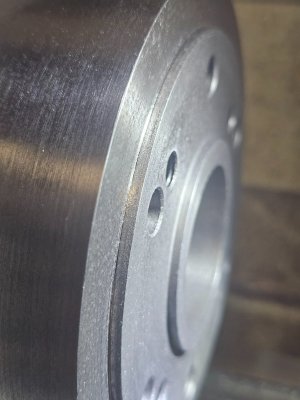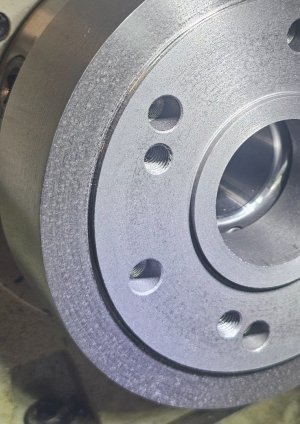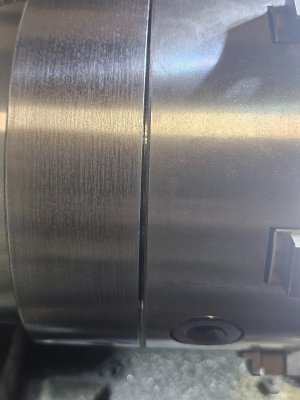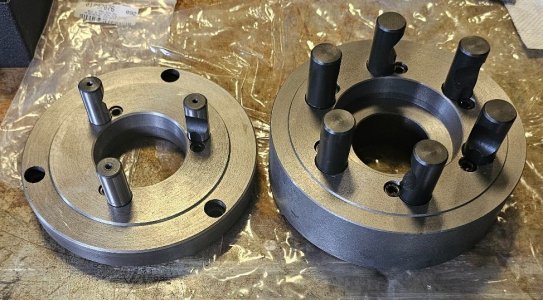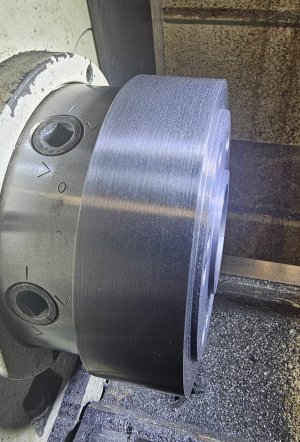Photo not copied
Peter, what you sketched is more or less what I have. The shoulder in the longer hole is slightly higher than the shorter one. The two holes in the bottom jaw appear to be identical. I tried a 25mm screw in the shorter hole and it fits fine bottoming out on the shoulder not the bottom of the hole. That makes sense because the difference in the shoulder height measures 4.9mm. That tells me that I can clean up the female threads with a bottoming tap and then use 30mm and 25mm screws to hold the jaws together.
I might also make tension buttons with longer screws like I use on my 3 jaw.
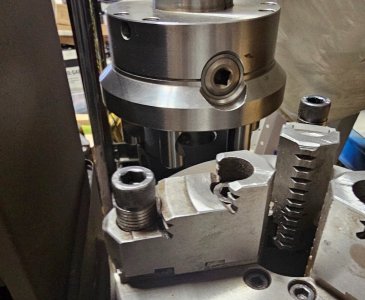
It is basically a set of sleeves that spac up the screw head so they can be used as expansion jaws when the jaws are set for OD clamping on a delicate part.
Some day, I'd also like to grind pillars to put on those 6 inside screws to act as chuck stops for squaring up stock held away from the chuck face. The screws are screaming at me to be used that way.


